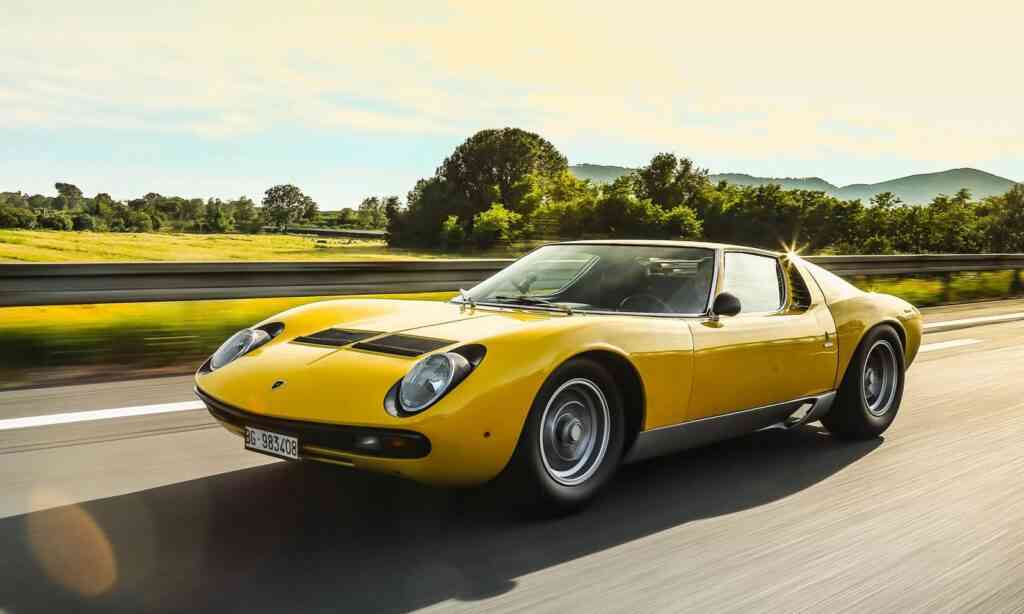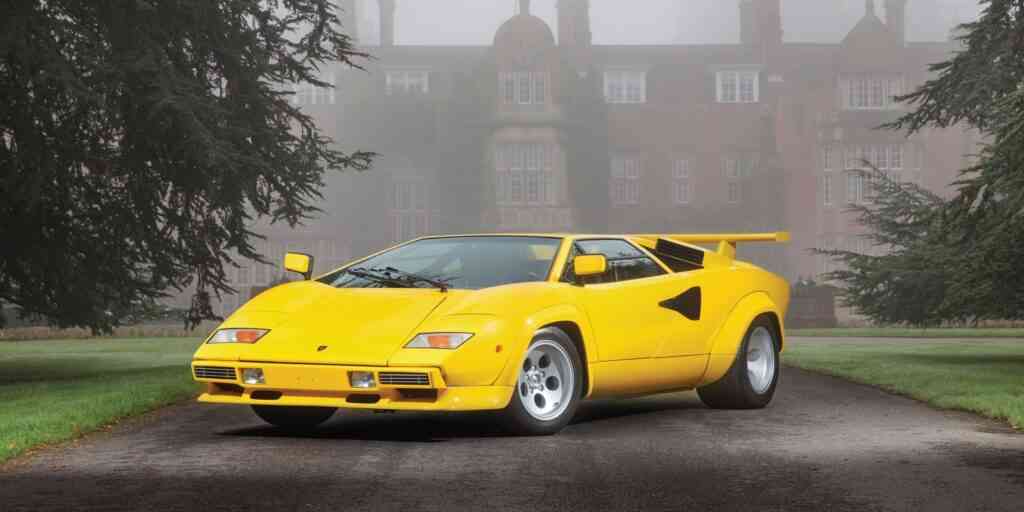Our Top 10 Lamborghinis Ever Made












Lamborghini is arguably one of the world’s most iconic and renown supercar manufacturers. But did you know that Lamborghini was born out of Ferruccio Lamborghini’s frustration over a bad experience with a Ferrari he bought, and the way Enzo treated him.
Ferruccio, having built tractors since 1948, decided he could create a better sports car and launched Automobili Lamborghini in 1963. While Ferrari has produced over 50 nameplates to date, Lamborghini remained a lower profile carmaker. Sant’Agata has only produced 23 models, including some limited-edition nameplates based on existing supercars. We have made a list of our top 10 cars that Lamborghini has ever produced.
1.Lamborghini Miura

The Lamborghini Miura has long been hailed as one of the prettiest cars ever built and the most iconic supercar of the 1960s.
Originally conceived by Lamborghini’s engineering team, Gian Paolo Dallara, Paolo Stanzani and Bob Wallace, who designed the car in their spare time – against the wishes of company founder Ferruccio Lamborghini. The engineers envisioned a road car with racing pedigree, one which could win on the track and be driven on the road by enthusiasts, thus creating the world’s first supercar!
The Miura was built between 1966 and 1973 and was the first supercar with a rear mid-engined two-seat layout. At its debut, the Miura was the fastest production car in the world: With a top speed of 280 km/h and an acceleration of 0 to 100 km/h in 6.7 seconds, the Lamborghini Miura set new standards in the sports cars segment.
This layout has since become the standard for high-performance sports and supercars. Some fans suggest the Miura was the car that really helped Lamborghini establish itself as a player in the automotive manufacturing market.
2. Lamborghini Diablo

The Diablo was the first Lamborghini ever to achieve a top speed north of 200mph. It was replaced by the Murciélago when it went out of production in 2001 and is notable even at first glance for its delightful ’90s styling.
Stylistically, the Diablo was not only the birth of modern supercar design; it was also capable of reaching over 200mph thanks to the impressive 5.7L V12 engine. A car of beauty, it sold over 2,500 models.
If the Countach was the 1970s in super car form, the Diablo was a perfect example of car design in the late 1980s and early 1990s. Almost impossibly wedge-shaped, the Diablo served as Lamborghini’s flagship from 1990 to 2001, although we’d argue the most desirable examples are the pre-facelift cars, which featured pop-up headlights. Pop-up headlights are always better. But regardless of which year we’re looking at, the Diablo is the last of the pre-Volkswagen Group Lamborghinis, for better or worse.
3.Lamborghini Countach

The Lamborghini Countach was a supercar icon from the moment the first prototype appeared at the Geneva Motor Show in 1971. The revolutionary shape of the Countach pioneered the wedge-shaped front-end, and the overall highly angled lines, popular with many supercars at the time, and it is considered one of the greatest supercars ever built. The Countach had groundbreaking design that is still seen in the top supercars of today.
With its dramatic wedge style, scissor doors and a claimed maximum speed approaching 200mph from its 375bhp V12, the Countach was a concept car for the road. But despite its otherworldy looks, it was also dynamically much more complete than the Miura – with more grip in the bends, and far more stable high-speed cruising.
While most subsequent Lamborghinis have been named after bulls or bullfighting, Countach is actually an exclamation in the local Piedmontese people, usually uttered by a man upon seeing an especially beautiful woman.
4. Lamborghini Huracán

The Huracán‘s is named after a Spanish fighting bull, this aligns with the existing naming convention adopted by Lamborghini. Huracán was a bull known for its courage that fought in 1879. The full name of the Huracán is the LP 610-4, which refers to the fact that it has 610 metric horsepower and 4-wheel-drive, and the LP stands for ‘Longitudinale Posteriore’, which does not mean ‘long posterior’ but rather refers to the mid-rear position of the engine.
Available in two bodystyles – Coupé and Spyder and also with a choice of rear or all-wheels drive by a magnificent 5.0-litre V10 petrol engine – producing 562bhp for the RWD and 593bhp for the AWD version.
Despite all its allure, the Huracán will be remember as something of a trailblazer when Sant’Agata launched it with an active variable-ratio power steering system, dubbed ‘Lamborghini Dynamic Steering’ (LDS). As always, the Huracán is fast, loud, sharp, extroverted – and about as impactful as it’s possible for anything on four wheels to be. A fine and authentic modern Lamborghini, then.
5. Lamborghini Gallardo

The most produced model to date, the Lamborghini Gallardo, is named for the historic breed that was used to create the Miura line of bulls back in 1842. The Lamborghini Gallardo is a sports car built between 2003 to 2013. It is Lamborghini’s best-selling model with 14,022 built throughout its production run.
The Gallardo’s a landmark Lamborghini, the first genuinely all-new car to be made by Sant’Agata under Audi ownership. It also marked a return for the firm to making a more affordable, usable super sports car than its legendary dynasty of V12s.
The V10 powered Gallardo has been Lamborghini’s sales leader and stable-mate to a succession of V12 flagship models. The dimensions of the Gallardo and its performance goals lend it a compact sense of athleticism. The vehicle’s wheelbase and reduced overhangs give it a more dynamic look.
6. Lambroghini 350 GT

The first production car to wear the Lamborghini badge, the 350 GT, famously, came about after Enzo Ferrari snubbed Ferruccio Lamborghini. The fragile cars and the poor ownership experience dissatisfied Lamborghini, a successful tractor manufacturer. Enzo didn’t much care about Lamborghini’s complaints, so Ferruccio decided to take a whack at car production. The 350 GT was the first fruit of that labor.
Carrozzeria Touring did the 350 GT’s long, sleek body, while the legendary engineer Giotto Bizzarrini originally developed the front-mounted V12 for the 350 GT’s prototype, the 350 GTV. The 350 GT might not pack the visual punch and straight-line speed – it had around 280 hp – of later Lamborghinis, but it was a strong first step for the brand.
7. Lamborghini Aventador

Dubbed the greatest Lamborghini of all time the Aventador is the current flagship model of Lamborghinis product offering. Unveiled in 2010, the Aventador is named after a competition-winning bull from 1993, which says a lot.
Although the Aventador is loaded with state-of-the-art technology, at its heart it remains a supercar of the old school, a massively wide, impossibly low machine powered by an outrageously powerful and classic normally aspirated V12.
8. Lamborghini Veneno

To celebrate their 50th Anniversary, Lamborghini created, as some suggest, the wildest Lamborghini ever made. The Veneno is based on the Aventador LP700-4, it will be built in exactly three units, plus the company’s demonstrator car. Named after one of the strongest, fastest fighting bulls there ever was.
Power comes from the incredible L539 6.5-liter V-12 engine, upgraded here to produce 740 horsepower. The extra power—the Aventador packs 691 horses—was found by enlarging the air intakes, allowing for higher revs, and modifying the existing exhaust system. The redesigned front and rear arches direct air around the car in order to reduce excessive lift and aid in generating downforce. The smooth underbody ensures that the airflow is not interrupted.
It has the same permanent 4WD, inboard pushrod suspension and carbon monocoque chassis. It costs three million Euros – plus tax – and the trio of owners has already been found. It was introduced at the 2013 Geneva Motor Show. When introduced, it had a price of US$4,000,000, making it one of the most expensive production cars in the world.
9. Lamborghini Murciélago

Succeeding the Diablo and preceding the Aventador, the Murciélago spent nearly a decade as the flagship Lamborghini model. The car is named after a fighting bull that survived being hit with a sword 24 times in an 1879 fight.
The Murciélago had various incarnations during its run, the latest and most powerful of which was the LP 670-4 SuperVeloce, known to you and I as the SV, a moniker that had already been initiated into the Lamborghini world with the Diablo and the Miura. Its 6.5-litre V12 engine generated 661 brake horsepower and it could do 0-60mph in 2.8 seconds, which is probably fast enough to make your face look as though you have played rugby for ten hours a day your whole life.
Lamborghini’s flagship cars typically set the trend for that decade. The 1970s had the Miura, the 1980s the Countach, and the 1990s the Diablo. When the Murcielago roared onto the scene, it swept away the then-dated styling of the Diablo with clean lines and minimal fussy details. It hasn’t aged too well, especially in the face of the current trendsetter, the Aventador, but the Murcielago was Lamborghini’s standout design in the new millennium.
10.Lamborghini Reventon

The ultra-exclusive Reventón, of which only 20 were produced for the public market, was Lamborghini’s shining car, showing the very best engineering on the market. The all-carbon fibre exterior was styled on the world’s fastest aeroplanes, making it sleek and utterly beautiful.
Like the Veneno, the Reventón was an extremely rare vehicle sold only to Lamborghini’s most loyal customers. Unlike the Aventador-based Veneno, though, the Murcielago-based Reventón actually had some impact on the company’s other products. The $2.1-million Reventón influenced the facelifted versions of the Gallardo, as well as the Murcielago’s replacement, the Aventador.




